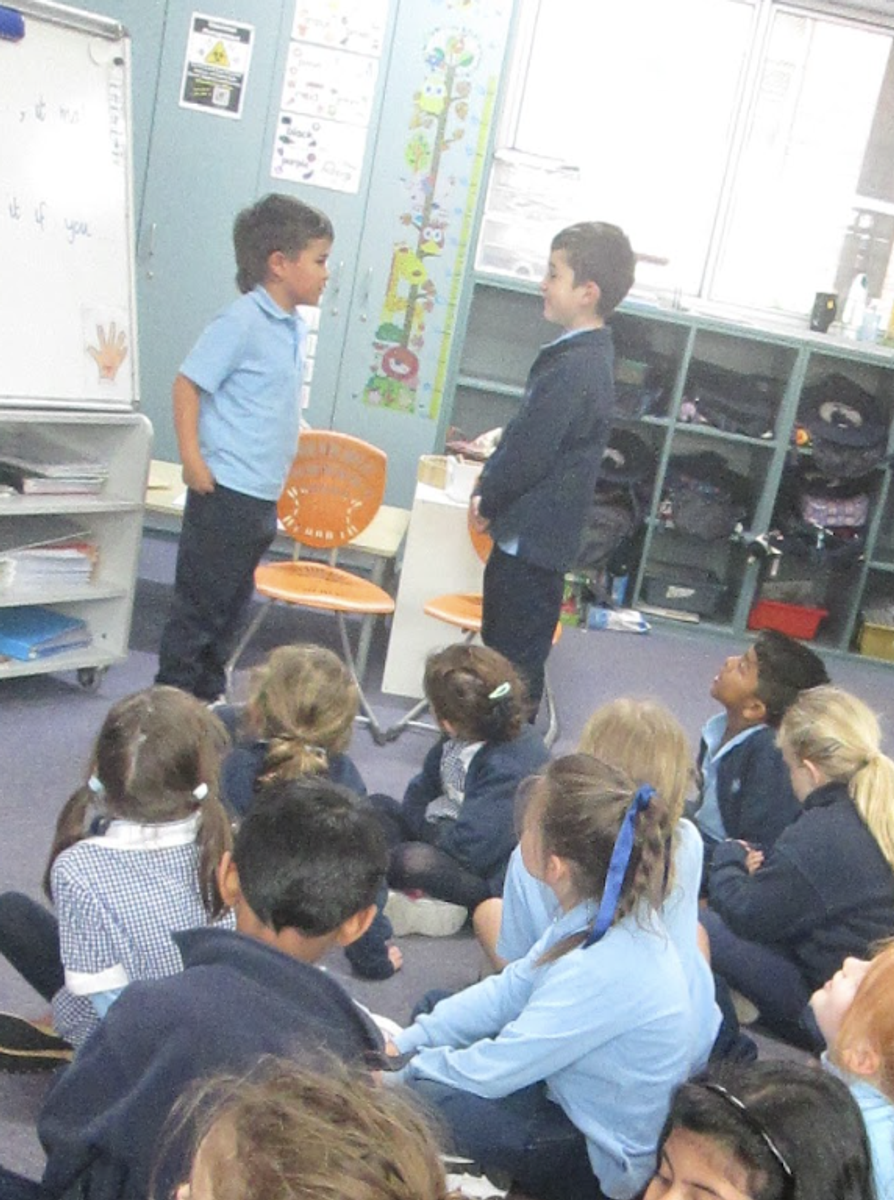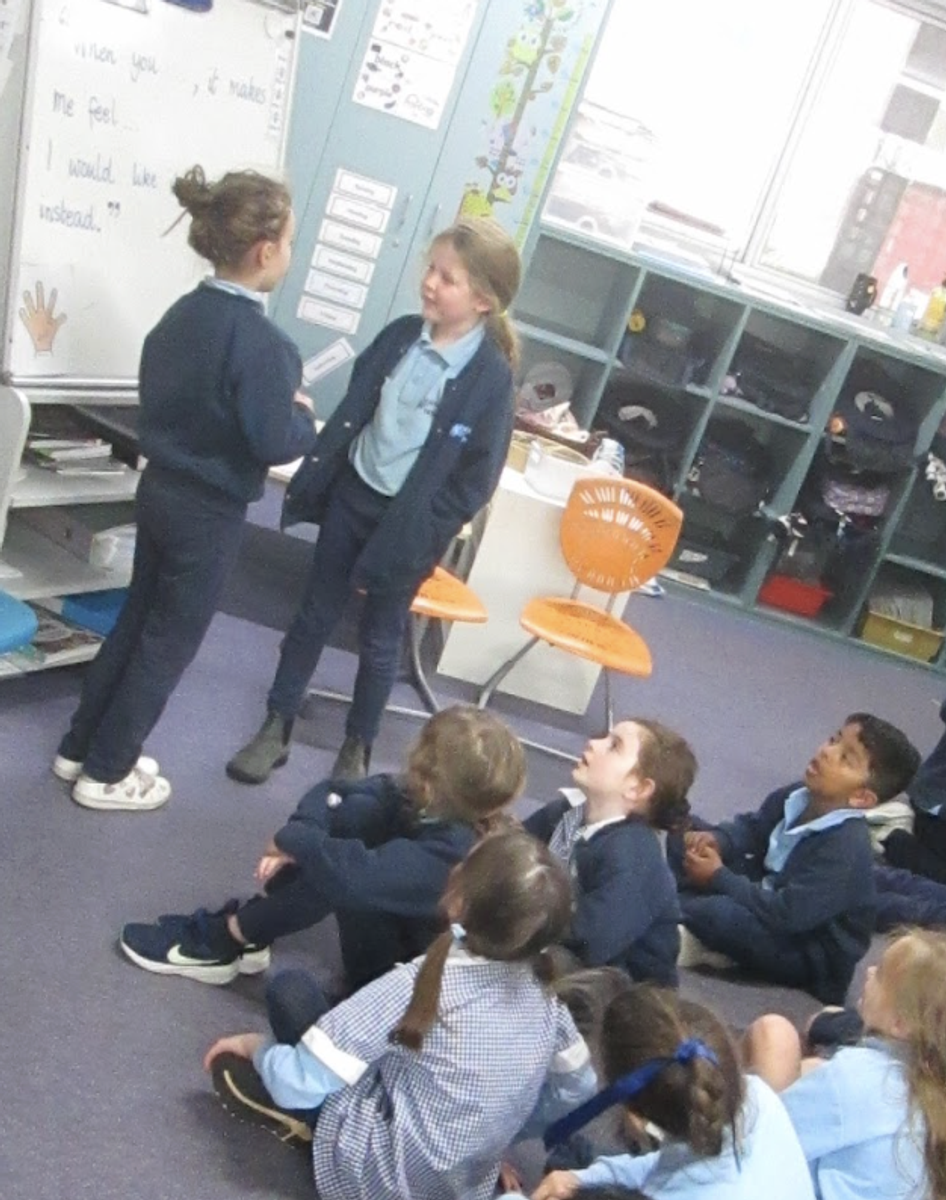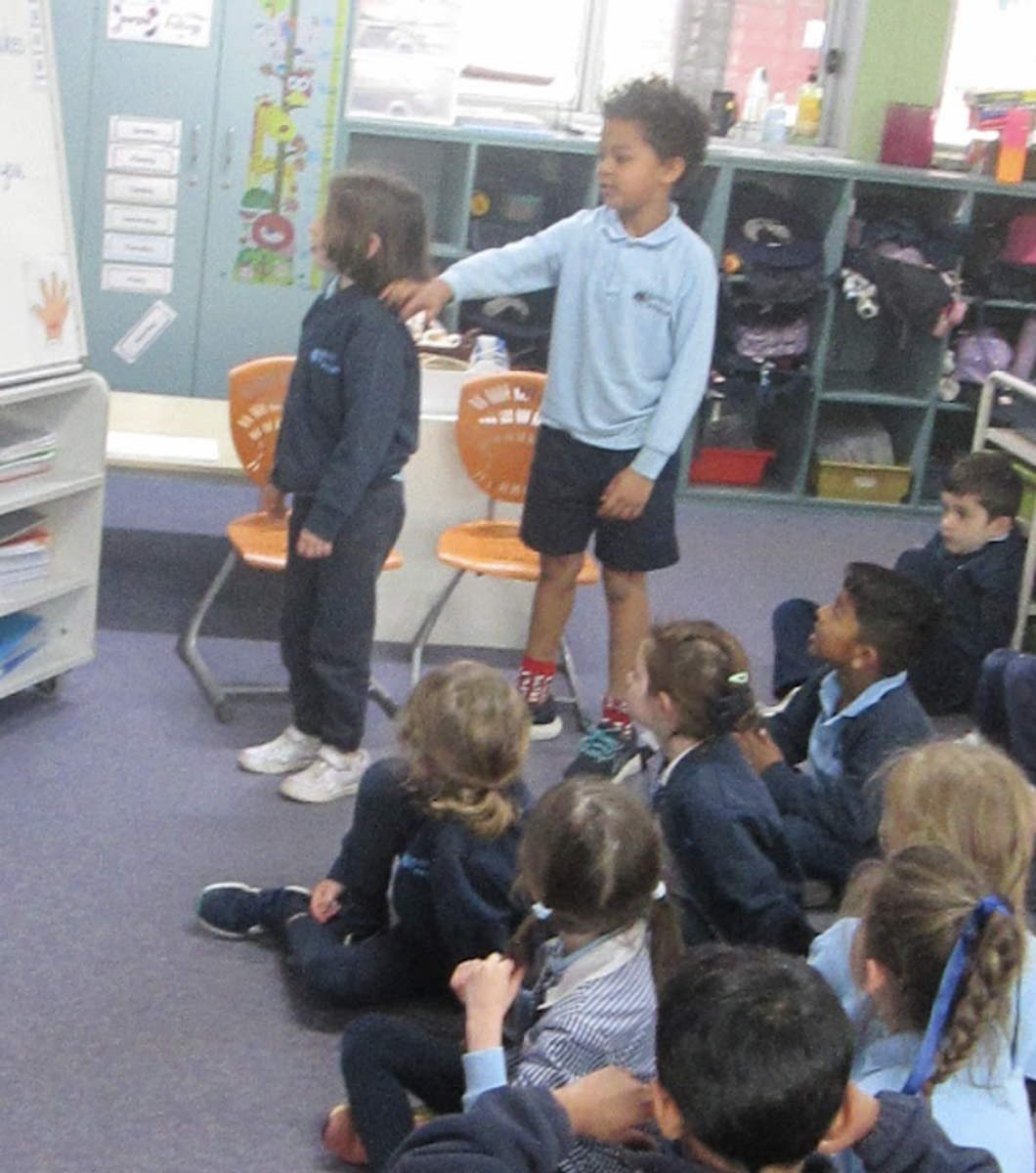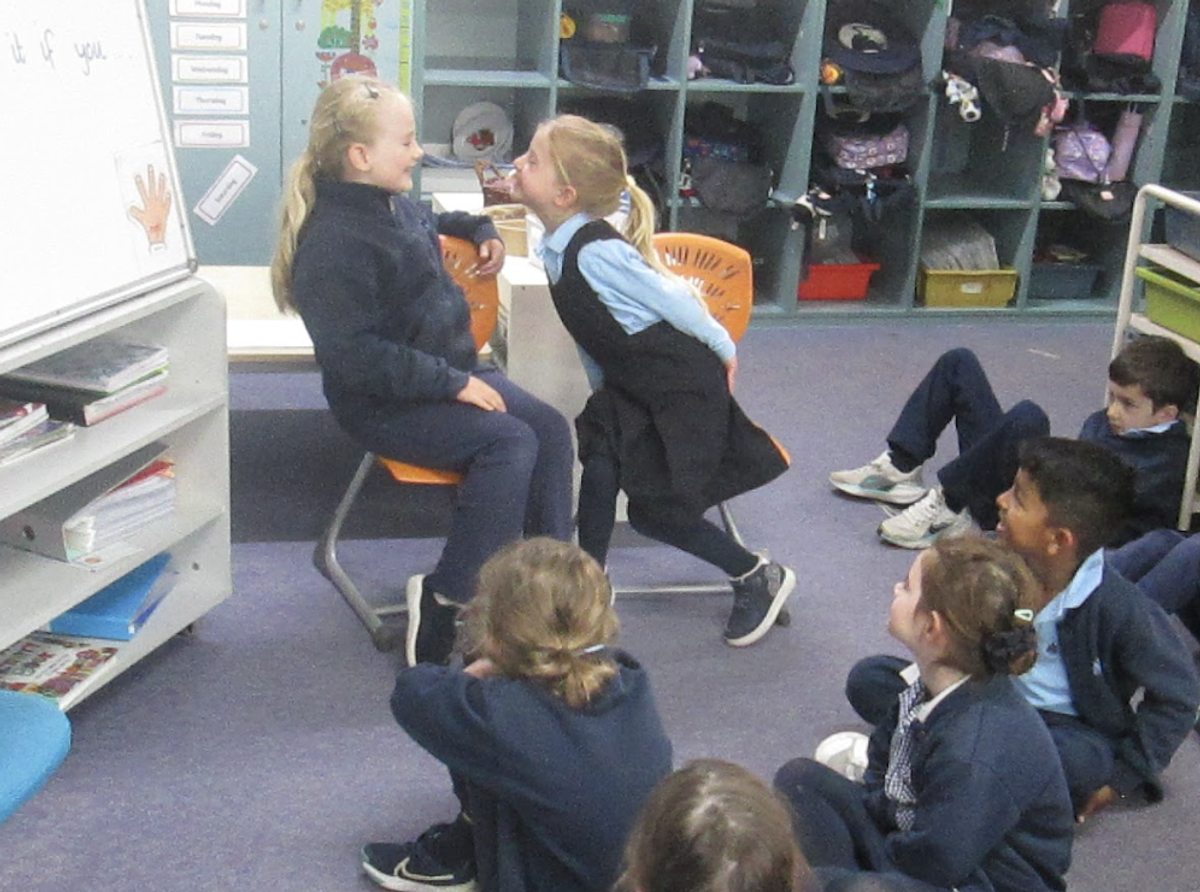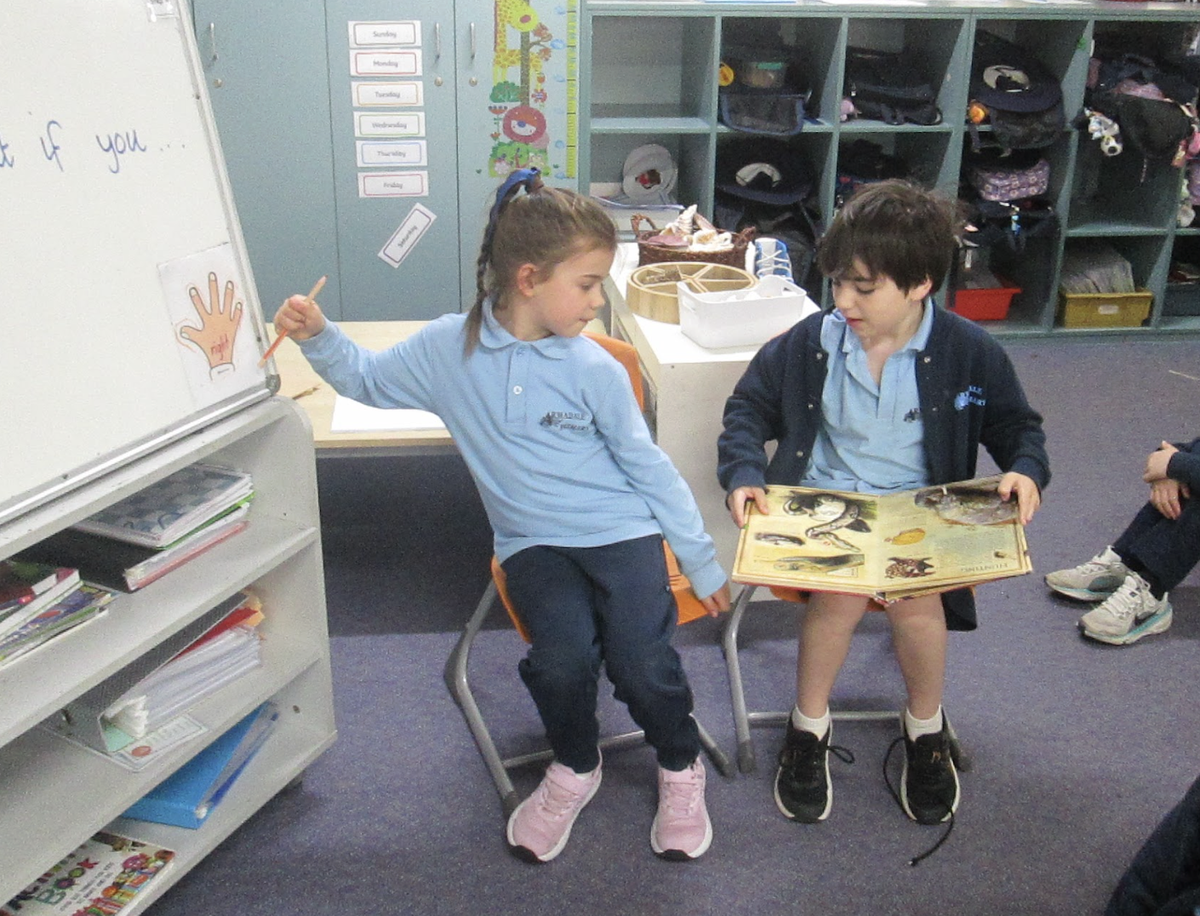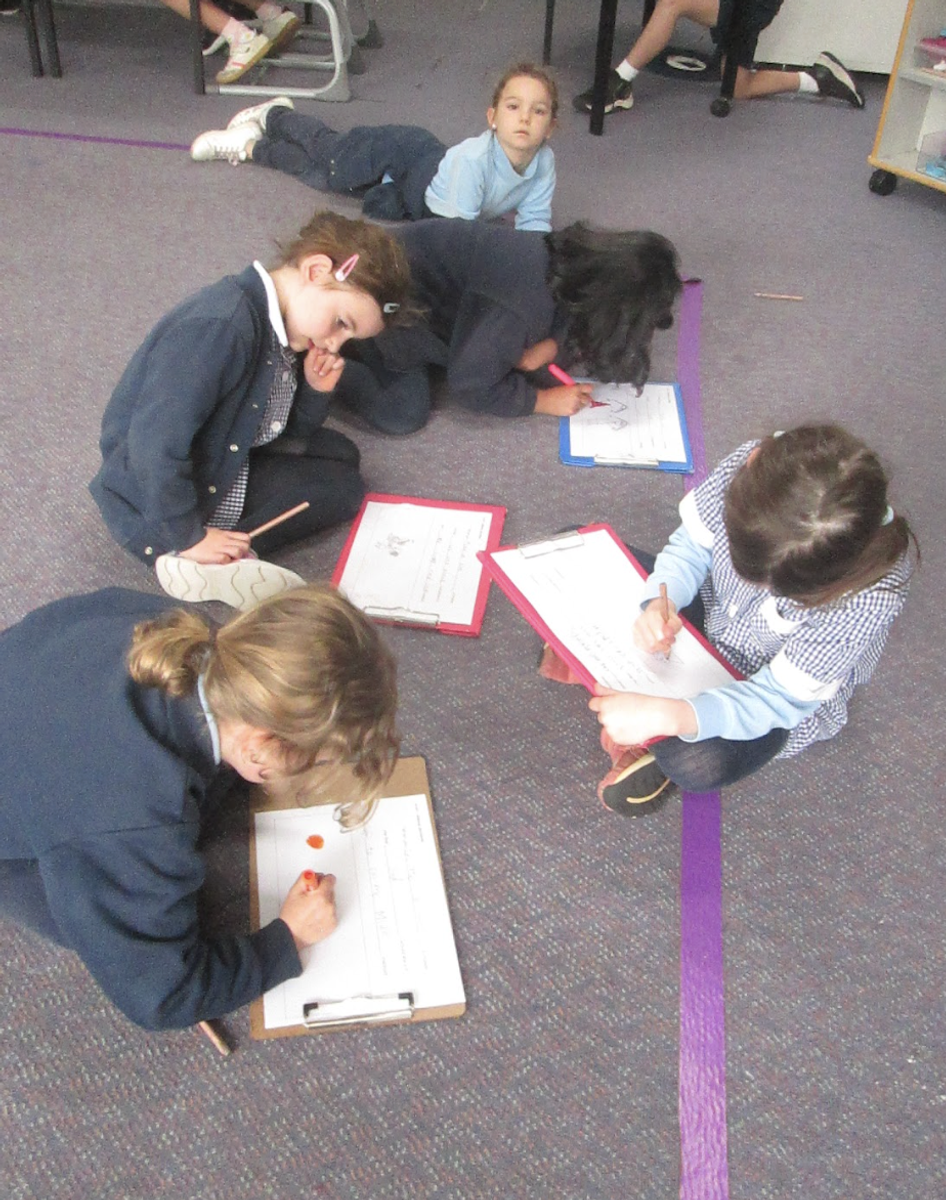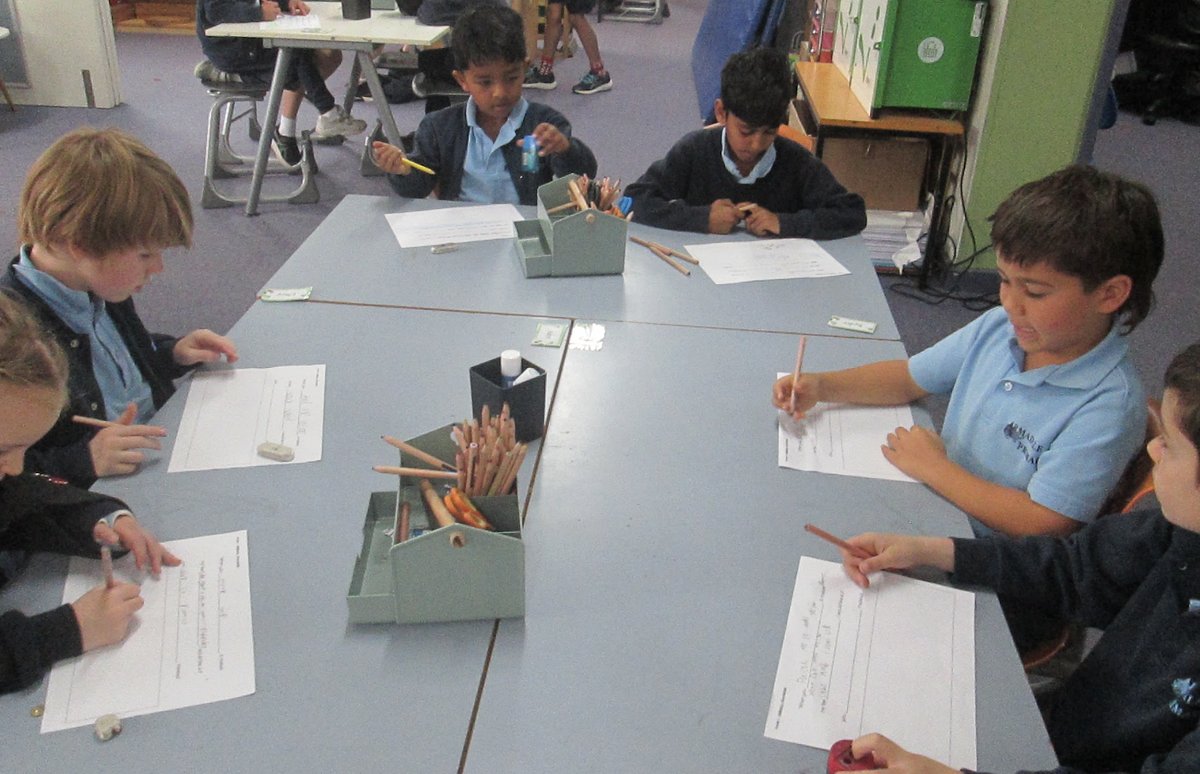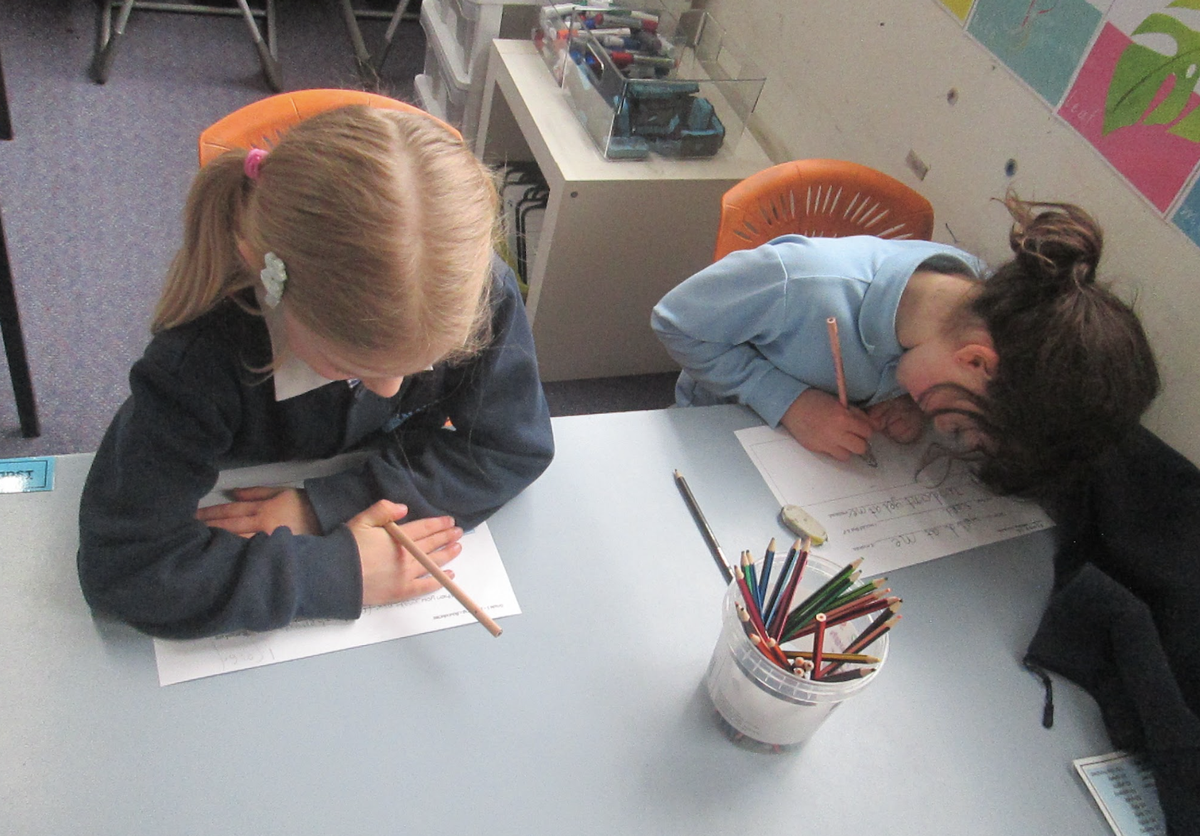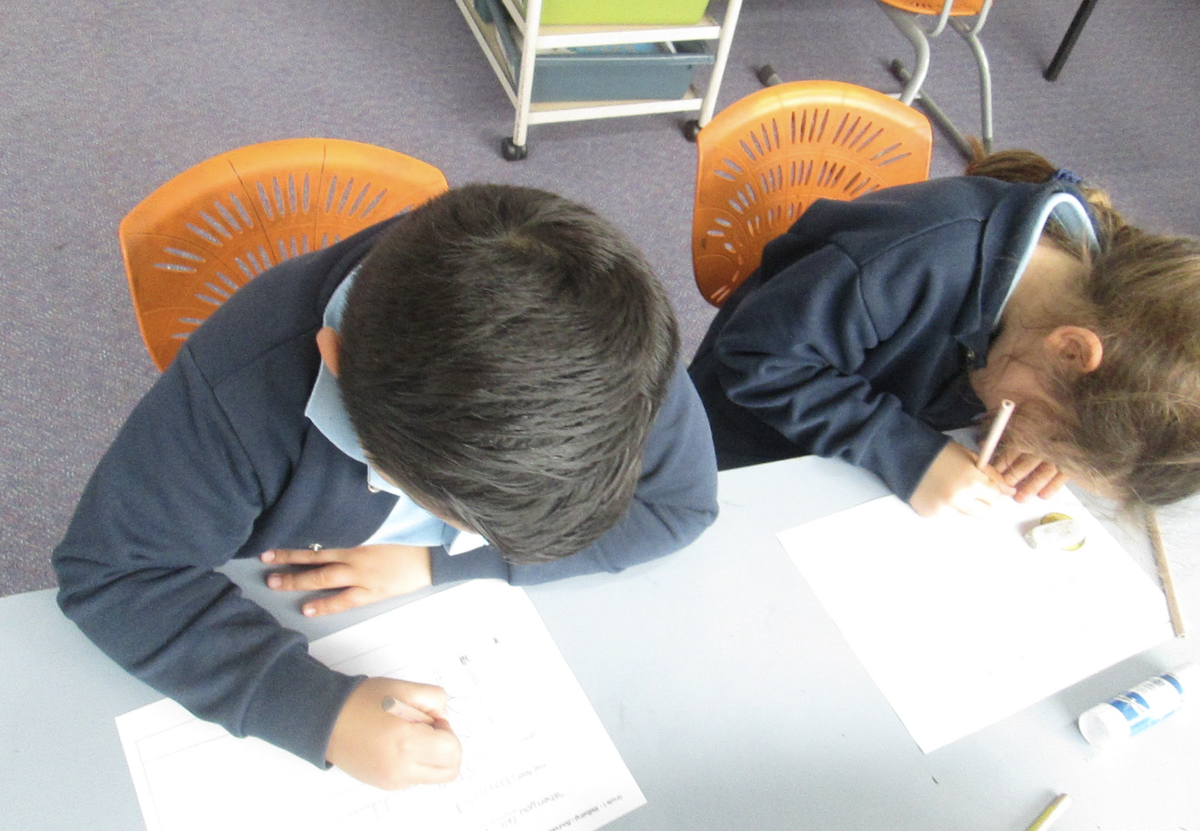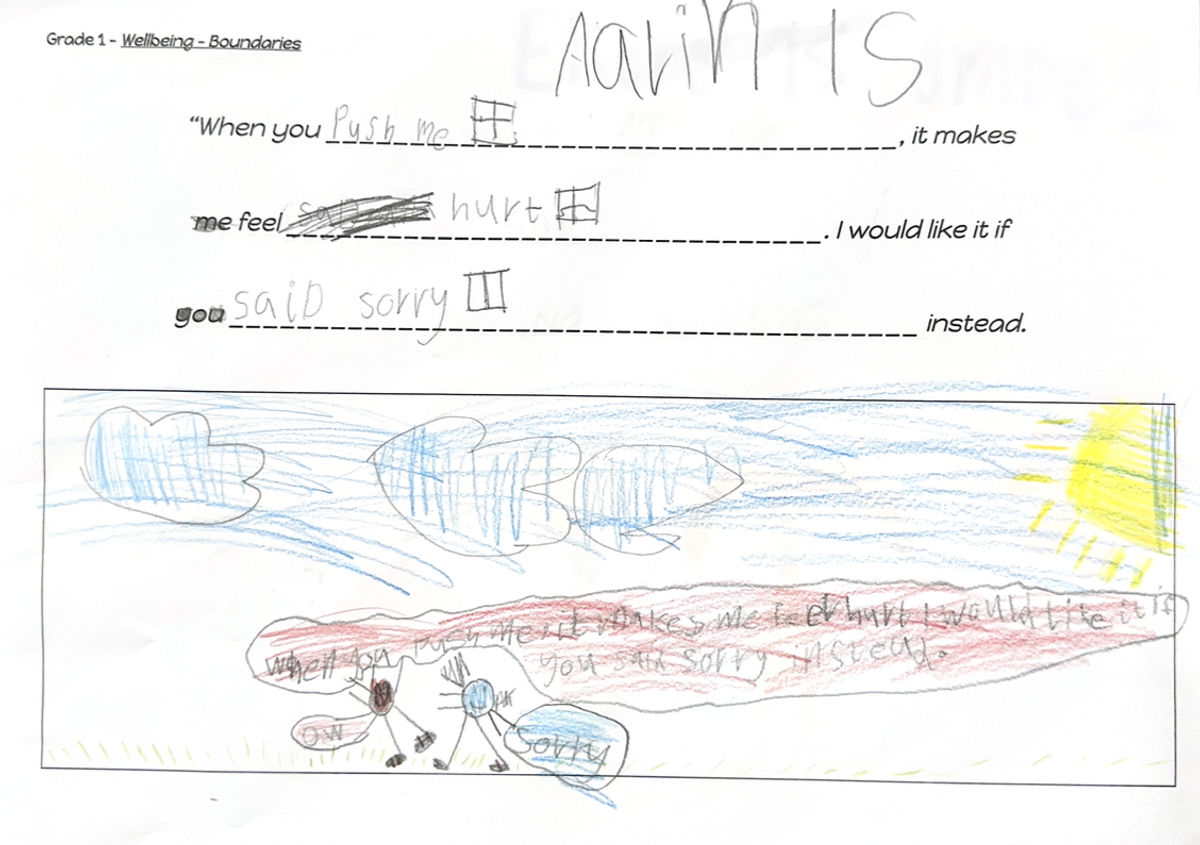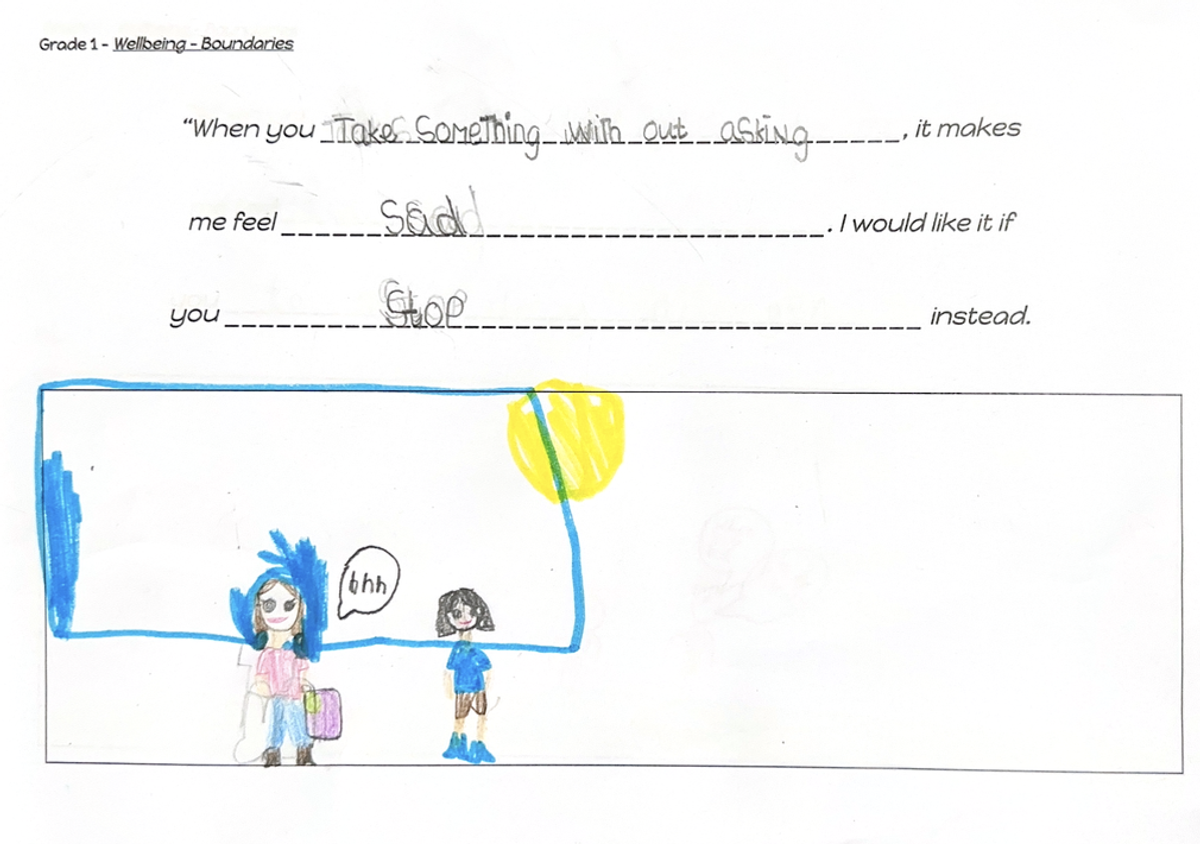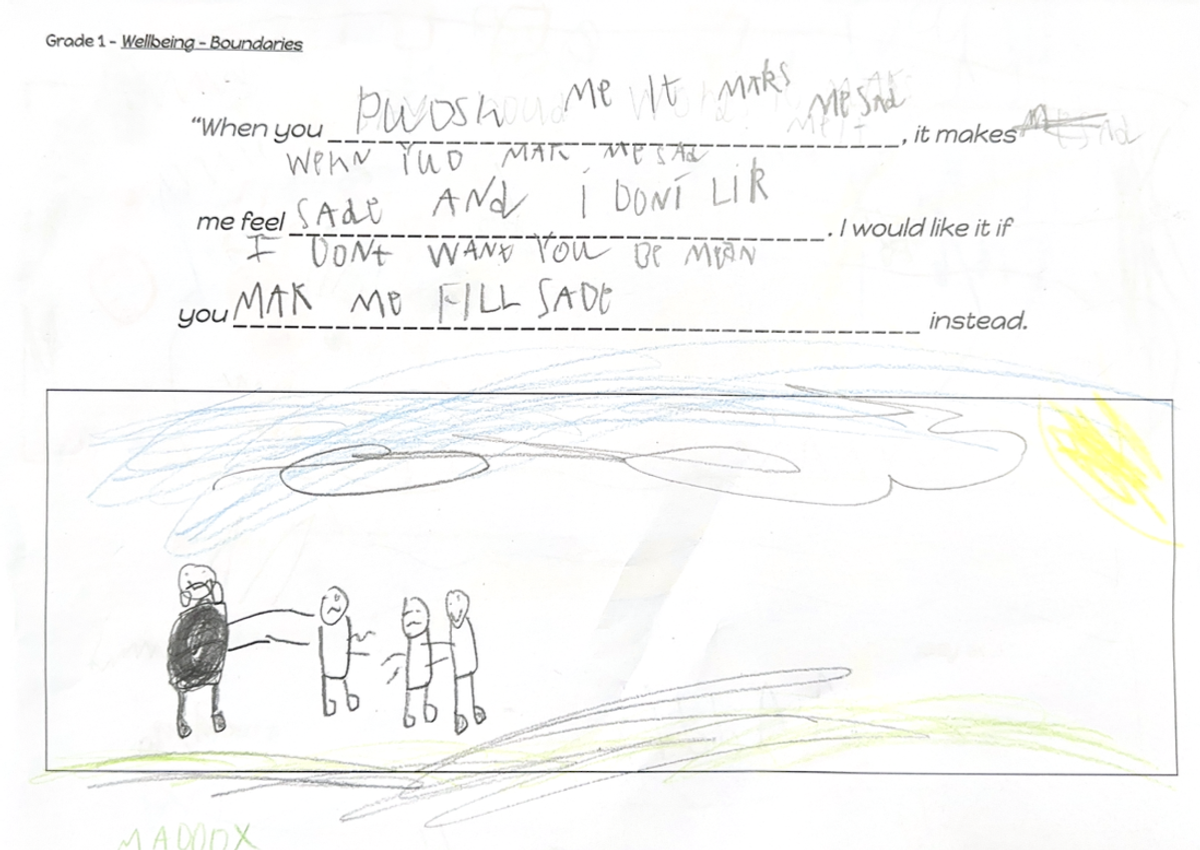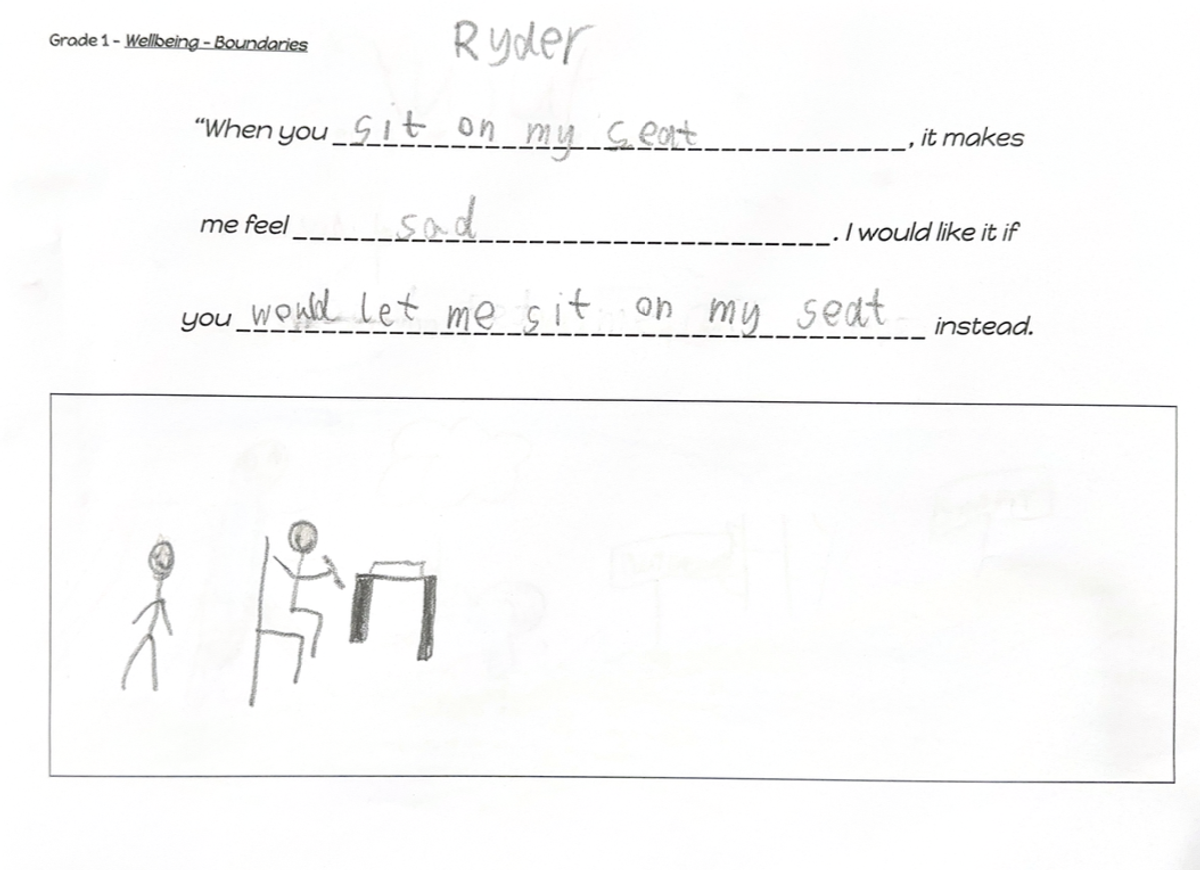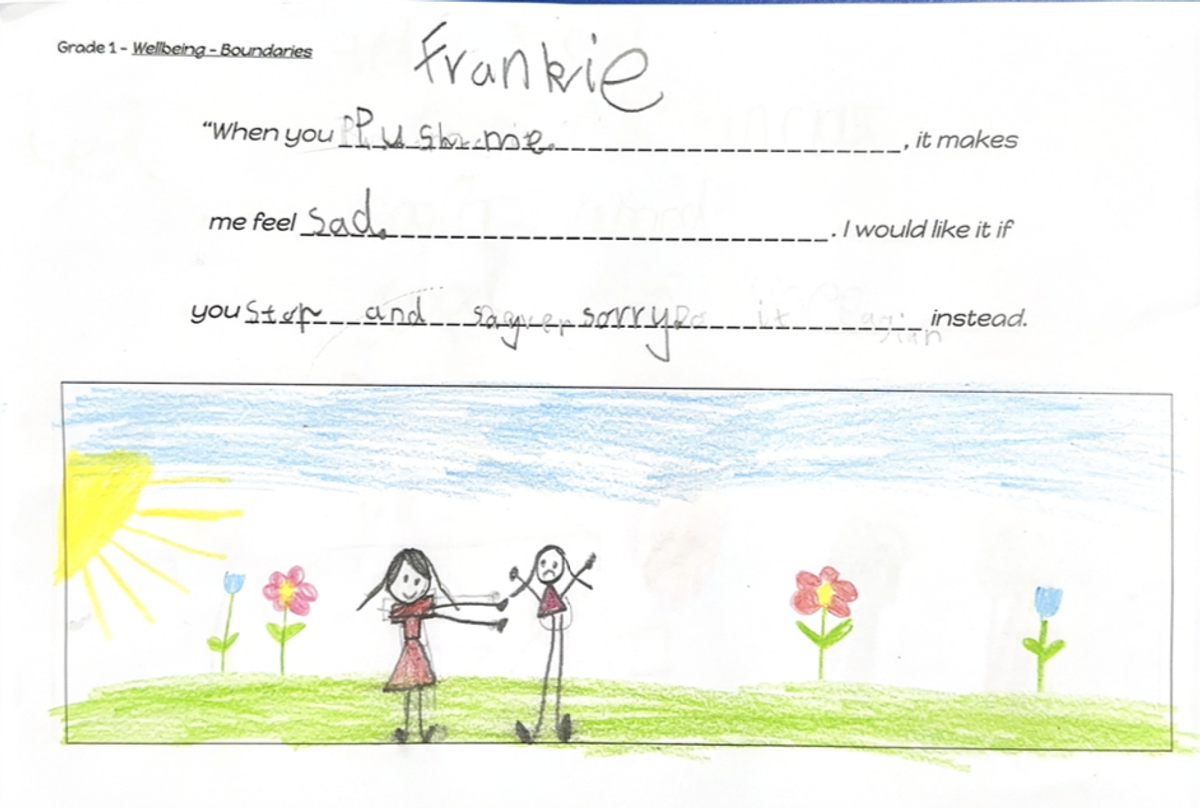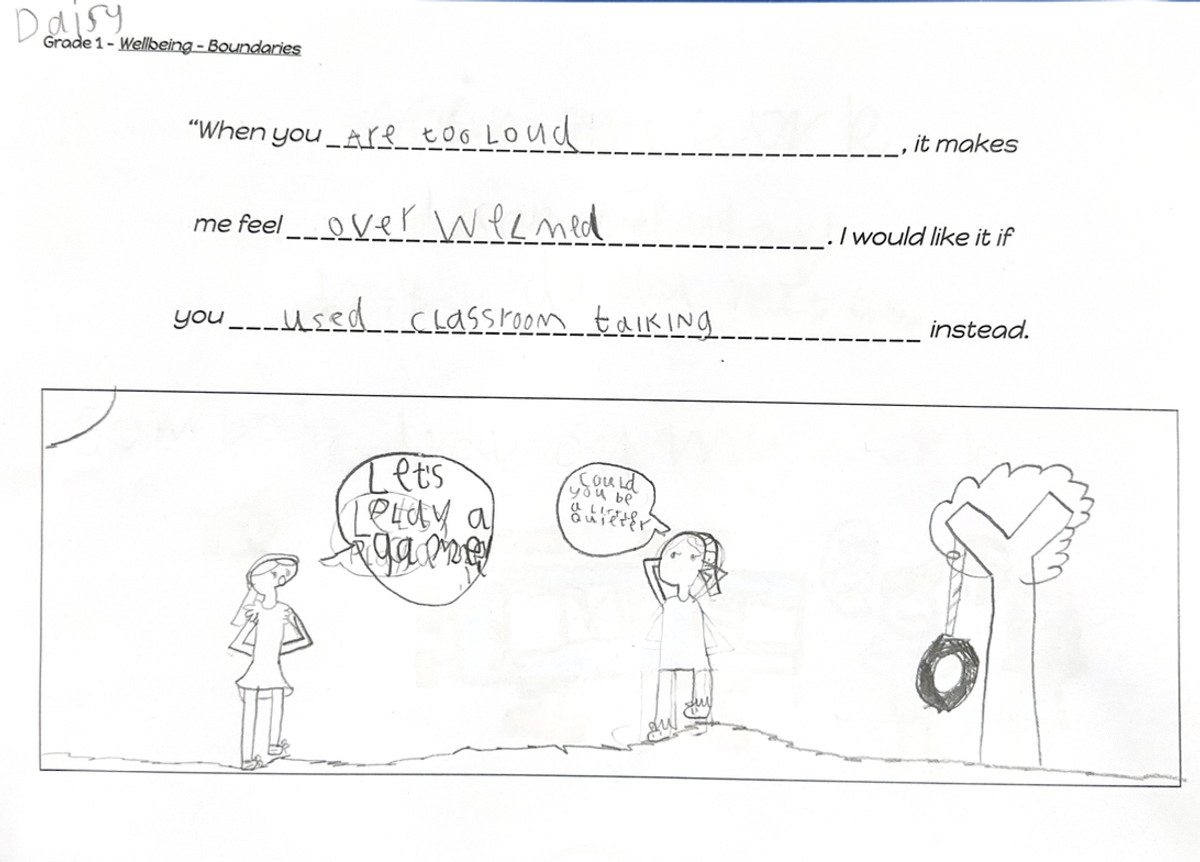Year 1 Bulletin

Well-being: Setting Boundaries in Friendships
Learning Intention:
To use the strategy of telling others how we feel to help keep our friendships kind, fair, and safe.
Learning Experience Overview:
In this lesson, students explored what a boundary is and why it matters in maintaining healthy friendships. They discussed how everyone has their own comfort levels and that a personal boundary is an invisible rule that helps people feel safe, happy, and respected. The class revisited ideas about what it means to be a good friend and considered how unkind behaviours - such as interrupting, standing too close, or not listening - can affect the way others feel.
Students were introduced to language they can use when something doesn’t feel right in a friendship. Together, they learnt that it’s okay to tell someone when a behaviour is upsetting, and that using kind and assertive words can help both people understand each other better. This lesson supported the development of empathy, respectful communication, and self-awareness.
Whole:
The class began by exploring several friendship scenarios together, discussing how each situation might make someone feel and what they could say or do to set a boundary in a kind and confident way. Students shared ideas and reflected on how expressing boundaries can strengthen and deepen friendships, fostering greater understanding.
We then selected students to act out different scenarios and practice using the phrase: “When you _____, it makes me feel _____. I would like it if you _____ instead.”
Some of the scenarios included:
- Speaking very close to someone's face.
- Tapping someone on the shoulder repeatedly.
- Speaking over a friend when they are trying to share something.
- Using unkind words.
- Pushing someone.
- Having someone shout at you.
Small:
Students then worked individually to complete a reflection sheet using the sentence frame “When you _____, it makes me feel _____. I would like it if you _____ instead.” This activity encouraged students to think carefully about their feelings and practise putting their boundaries into words. It also provided a safe space for them to reflect on real-life experiences and rehearse positive ways to respond to tricky friendship moments.
Whole:
The class came back together to share examples of what they had written and discuss why communicating and respecting boundaries are so important. They reflected on how listening to others’ boundaries shows care and helps everyone feel comfortable, included, and respected.
Prompts Used:
- “How can I communicate my personal boundaries with friends?”
- “What does it feel like when someone respects your boundaries?”
- “What are some kind ways to tell a friend to stop?”
“Why is it important to listen when someone shares a boundary with you?”
Continuing the Learning at Home:
Families can continue supporting this learning by having gentle, everyday conversations about boundaries and feelings. You might like to:
- Talk about what personal boundaries look like in your family - for example, respecting someone’s privacy, taking turns, or giving personal space.
- Encourage your child to use calm and respectful words if something makes them feel uncomfortable, such as, “I don’t like that,” or “Please stop, that hurts my feelings.”
- Role-play simple friendship situations at home (e.g., when someone doesn’t share, interrupts, or stands too close) and practise how to respond kindly and assertively.
- Praise and notice moments when your child shows empathy, uses kind words, or respects others’ boundaries.
- Revisit the idea that everyone’s boundaries are different and that listening carefully helps us build stronger, more caring relationships.
Kind regards,
Rosanna, Jarryd and Stef
The Year 1 Team
rosanna.caruso@education.vic.gov.au
jarryd.lamb@education.vic.gov.au
stephanie.lampard@education.vic.gov.au

